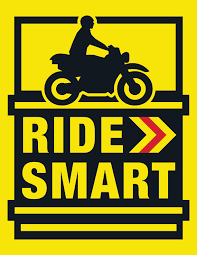
As riding season shifts into top gear, safety should be first priority
SPRINGFIELD — As warmer weather approaches, motorcycles are becoming a common sight. In an effort to advocate for a safe riding season, the Illinois Department of Transportation and the Illinois State Police have joined forces to kick off the latest “Ride Smart” safety campaign, reminding motorcyclists to have their bikes safety-checked to make sure they’re in proper running condition, prepare their high-visibility clothing and take advantage of the free motorcycle training classes throughout the state.
“Motorcycles are on the road for just part of the year yet account for 15 percent of all traffic fatalities, said Cynthia Watters, IDOT’s bureau chief of Safety Programs and Engineering. “To keep everyone safe, we urge drivers and motorcyclists to share the road, be alert, and to always ride sober. Motorcyclists are at an increased risk of injury or death when involved in a crash, so it is imperative that all riders ‘Ride Smart’ this riding season.”
Motorcyclists need an M-Class endorsement and a valid driver’s license to legally ride in Illinois. Successful graduates of an IDOT training course (age 18 or over) are issued a completion card, waiving the M-Class testing requirement at an Illinois Secretary of State licensing facility.
To protect themselves, riders should always:
• Wear personal protective gear on every ride, including high-visibility (Hi-Viz) clothing.
• Use eye protection, gloves, jackets, pants, boots and a U.S. DOT-approved helmet
• Remember to “Don’t Drink & Ride”
Illinois has offered free motorcycle training of all skill and experience levels since the Cycle Rider Safety Training Program began in 1976. The program is funded through license and registration fees. For more information, visit StartSeeingMotorcycles.org.
“As more and more riders are getting ready for the season, we encourage riders to perform a thorough safety inspection on their motorcycle, often referred to as a T-CLOCKS inspection,” said ISP Director Brendan F. Kelly. “After the bike is roadworthy, it’s time to dust off the rider skill set with a quality rider training. And once riders head out, it’s important everyone share the roadway and make good choices behind the wheel and handlebar as they interact with each other in traffic.”











